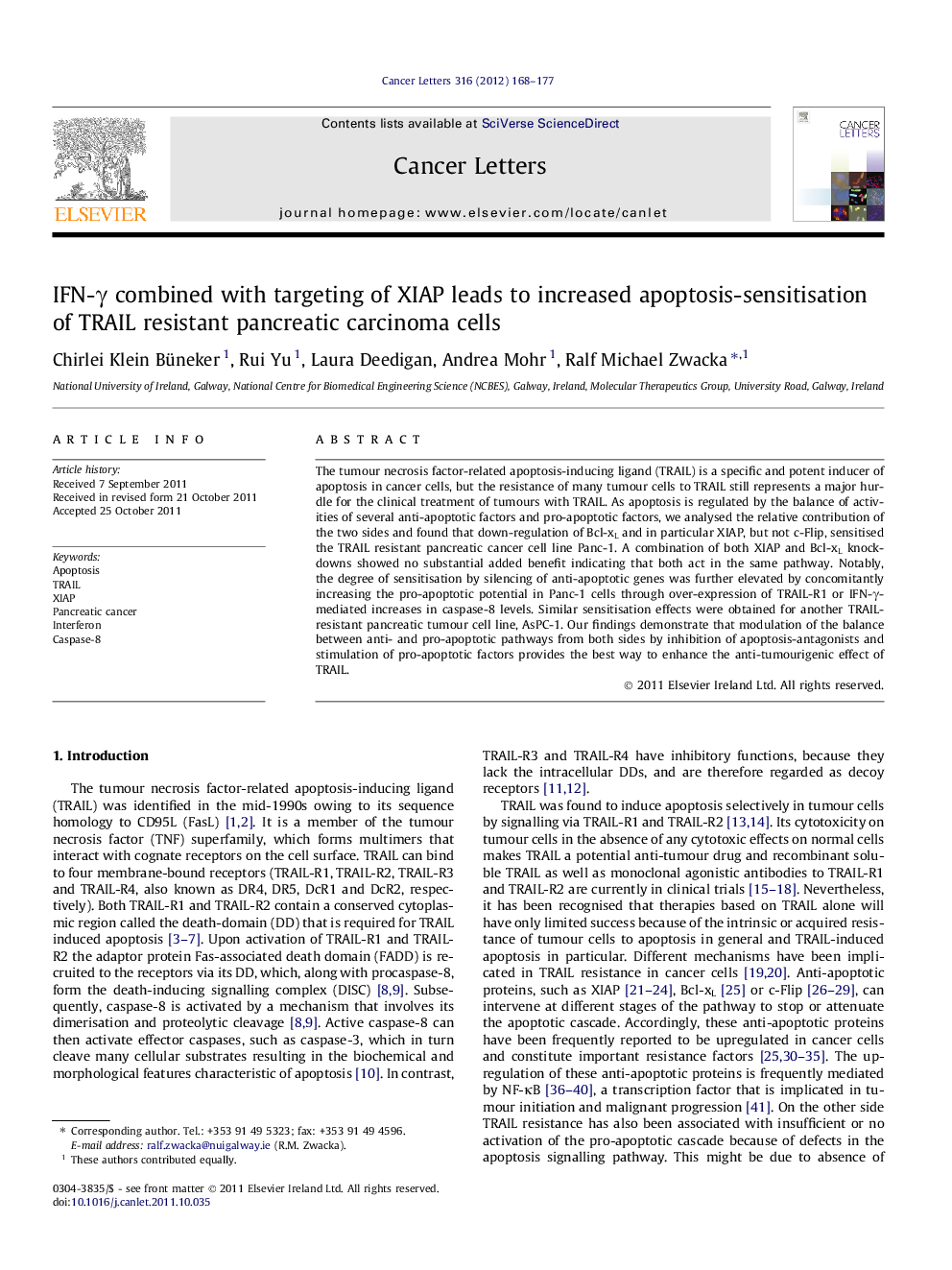| Article ID | Journal | Published Year | Pages | File Type |
|---|---|---|---|---|
| 2113364 | Cancer Letters | 2012 | 10 Pages |
The tumour necrosis factor-related apoptosis-inducing ligand (TRAIL) is a specific and potent inducer of apoptosis in cancer cells, but the resistance of many tumour cells to TRAIL still represents a major hurdle for the clinical treatment of tumours with TRAIL. As apoptosis is regulated by the balance of activities of several anti-apoptotic factors and pro-apoptotic factors, we analysed the relative contribution of the two sides and found that down-regulation of Bcl-xL and in particular XIAP, but not c-Flip, sensitised the TRAIL resistant pancreatic cancer cell line Panc-1. A combination of both XIAP and Bcl-xL knock-downs showed no substantial added benefit indicating that both act in the same pathway. Notably, the degree of sensitisation by silencing of anti-apoptotic genes was further elevated by concomitantly increasing the pro-apoptotic potential in Panc-1 cells through over-expression of TRAIL-R1 or IFN-γ-mediated increases in caspase-8 levels. Similar sensitisation effects were obtained for another TRAIL-resistant pancreatic tumour cell line, AsPC-1. Our findings demonstrate that modulation of the balance between anti- and pro-apoptotic pathways from both sides by inhibition of apoptosis-antagonists and stimulation of pro-apoptotic factors provides the best way to enhance the anti-tumourigenic effect of TRAIL.
